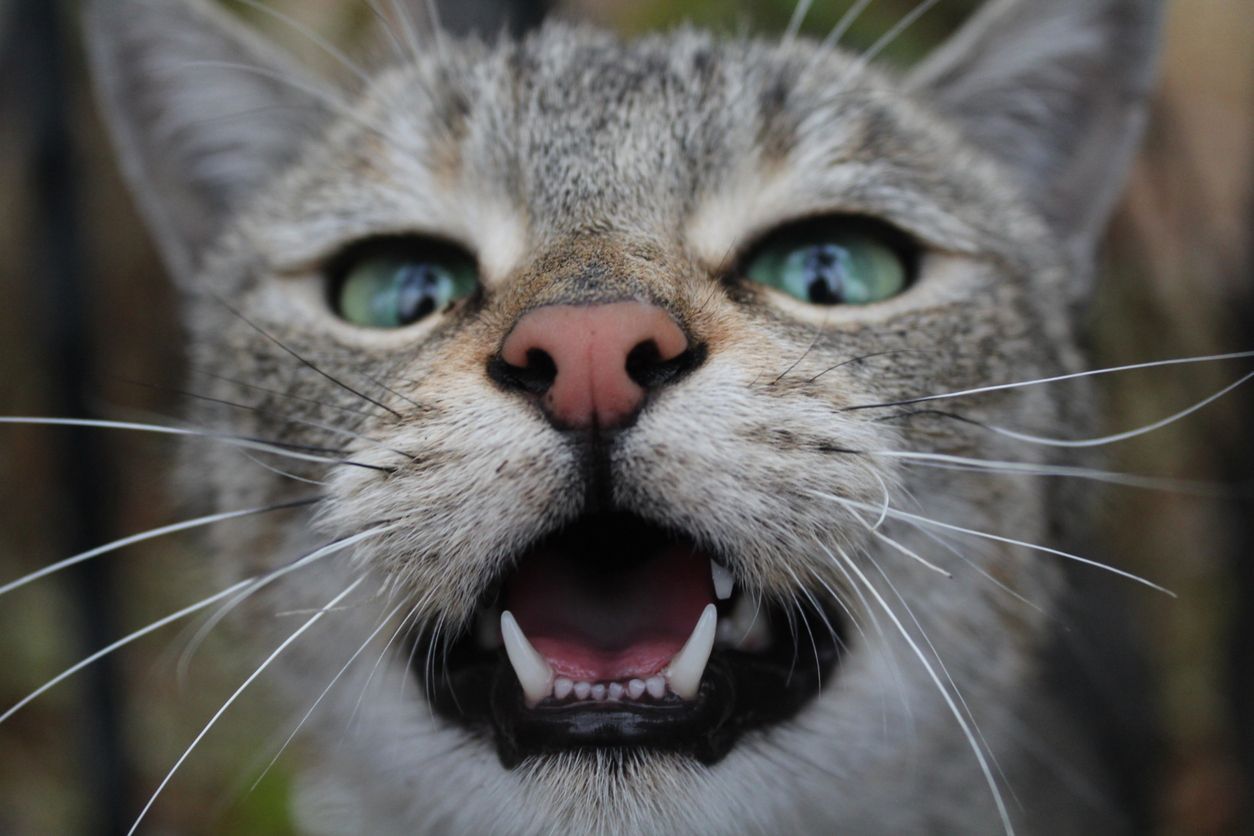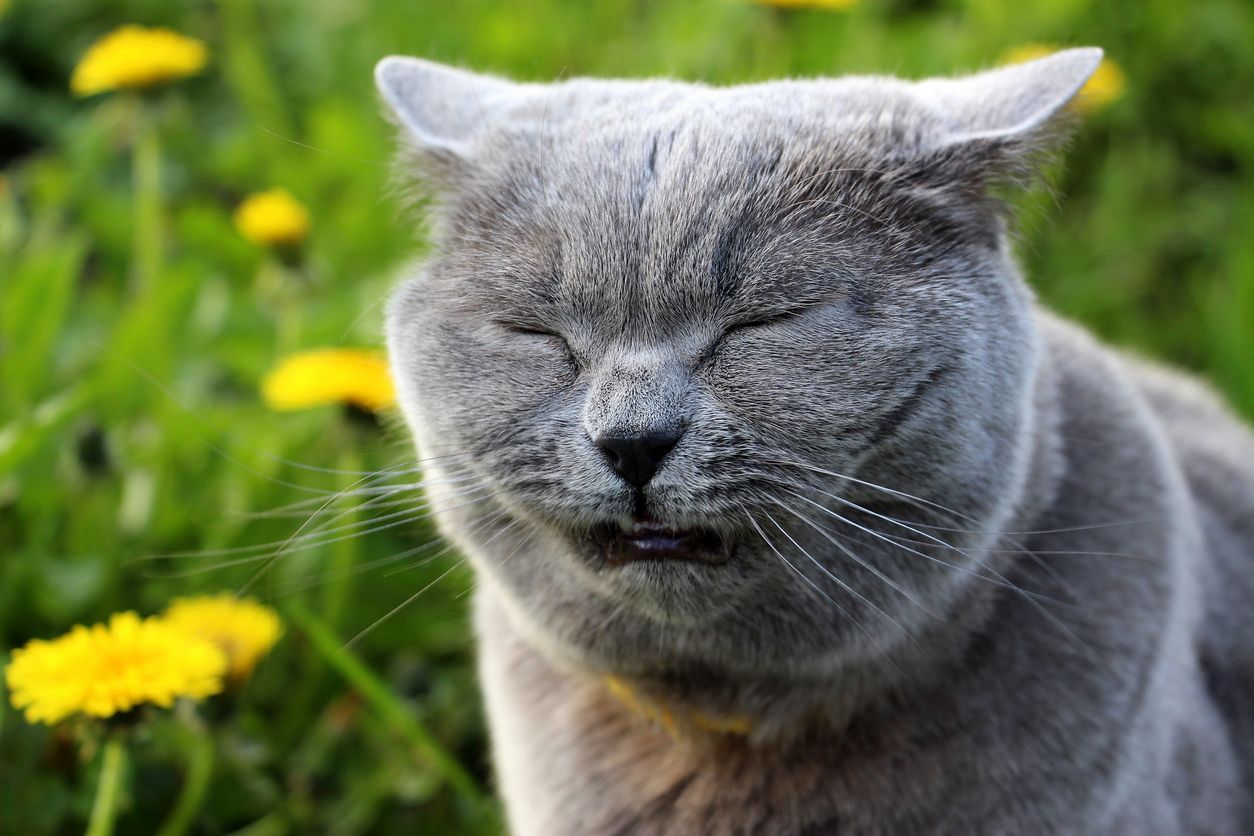How can I help my cat with tooth resorption?

Tooth resorption is a common condition in cats that is easy to overlook. The dental disease needs to be treated by a veterinarian to remove the painful teeth and improve a cat’s well-being. Read on if you have ever asked:
- What are resorptive lesions?
- How does a vet treat my cat’s tooth resorption?
- What are the signs of tooth resorption in cats?
- Can resorptive lesions in cats be prevented?
The treatment for resorptive lesions is different from other types of dental disease in cats, such as periodontal disease. It’s important to visit a veterinarian regularly for dental examinations to ensure your cat’s oral health and check for tooth lesions. Unfortunately, there is no way to save an affected tooth.
What is feline tooth resorption?
Feline tooth resorption is a dental condition in cats in which the outer surface of the tooth erodes from the inside. Resorptive lesions, sometimes called feline cavities, can appear like dental cavities seen in people, but they affect the tooth structure from the inside out rather than directly on the tooth surface. The condition eventually erodes the entire tooth crown and sometimes the roots. Currently, it is unknown what causes resorptive lesions in cats.
How common are resorptive lesions in cats?
Feline tooth resorption is one of the most common oral diseases found in cats. More than half of cats older than three years of age have at least one affected tooth. The risk of the dental condition increases as a cat gets older, though any cat can develop resorptive lesions regardless of age.
How is feline tooth resorption diagnosed and treated by a vet?
Resorptive lesions can be extremely difficult for cat owners to see. They are usually diagnosed by a veterinarian during an oral exam or seen during a routine dental cleaning. Dental X-rays are needed to assess the extent of the damage and whether the tooth roots have been affected.
Tooth resorption cannot be reversed, so a partial or full tooth extraction is necessary for treatment. However, if a tooth has been completely resorbed and there is no visible inflammation, treatment may not be needed. Though lesions affect a single tooth and do not spread to other teeth, a cat that has had one tooth affected by tooth resorption is likely to develop tooth resorption in other teeth throughout their lifetime.
Is anesthesia required for tooth resorption treatment?
The use of anesthesia during all types of dental procedures is much safer and less stressful for cats. Anesthesia also provides essential pain management for tooth extractions needed to treat feline resorptive lesions. While there are risks associated with anesthesia, they are low and even further minimized with pre-anesthetic bloodwork, physical examination, close monitoring, and other provided care.
What are the signs of resorptive lesions in cats?
“Feline tooth resorption is very painful but can be easily overlooked due to a lack of clinical signs,” explains Vetster Veterinarian Dr. Jo Myers. “Most affected cats don’t show obvious signs of pain.” Early dental lesions look like small pink spots on the tooth surface near the gum line. These spots can be extremely difficult to see. As the condition progresses, more of the white enamel of the affected tooth disappears, exposing more of the underlying pulp cavity. This area has many nerves and is highly sensitive, resulting in severe pain even in early tooth resorption. The remaining crown sometimes turns gray before dissolving completely. Eventually, the entire crown is resorbed, resulting in tooth loss. If the roots of the tooth remain, a pink bump may be visible on top of the gums where the crown of the tooth used to be.
Often, there are no outward symptoms of tooth resorption due to a cat’s stoic nature. In some cases, cats with tooth resorption may:
- Chatter or vocalize while eating
- Drool excessively
- Favor one side of the mouth while eating
- Prefer soft food or swallow dry food whole
- Hide more or show aggressive behaviors
- Have difficulty eating
Once the oral cavity is exposed due to the lesion, it is exposed to bacteria, causing pain and jaw spasms. This can result in a “chattering” sound. These symptoms, including chattering, may also be signs of different types of dental disease in cats.
It is uncommon for a cat to experience a decreased appetite due to dental pain, even if it’s severe. This means you cannot assume your cat’s teeth are fine just because they’re still eating. A thorough oral examination by a veterinarian is the best way to know if your cat’s teeth and gums are healthy.
Can I prevent my cat from getting resorptive lesions?
Unlike human dental cavities, resorptive lesions in cats cannot be prevented with at-home dental care. Tooth brushing and professional dental cleanings help prevent other types of dental diseases, such as periodontal disease, but cannot prevent tooth resorption in cats. It is currently unknown why resorptive lesions occur. Regular dental exams and routine dental cleanings help catch lesions, and pain relief is provided when your vet removes the affected tooth.
If your cat is showing signs of dental disease or oral pain, you can make a virtual vet appointment with a licensed veterinarian on Vetster to talk about your cat’s dental health.
FAQ - How can I help my cat with tooth resorption?
Can tooth resorption in cats be treated?
A tooth that has resorptive lesions cannot be saved. Unlike cavities in people, resorptive lesions cannot be filled because they affect the tooth from the inside out. A partial or full tooth extraction of the diseased tooth is the only treatment for tooth resorption and is intended to provide pain relief for your cat.
What happens if cat tooth resorption is left untreated?
Eventually, a tooth with resorptive lesions entirely dissolves away. Sometimes the roots remain, leaving a small bump on the gums. Feline tooth resorption is a painful condition and should be treated promptly to relieve the affected cat.
How much does it cost to treat feline tooth resorption?
The treatment of tooth resorption in cats can cost between a few hundred to over a thousand dollars, depending on how many teeth are affected and the hospital’s pricing and location. This includes the cost of dental extraction, anesthesia medication and monitoring, dental X-rays, and pain medication. Dental insurance purchased before the cat developed tooth resorption may provide some reimbursement.
What should I do if my cat has tooth resorption?
It’s important to talk to a vet any time you notice a change in your cat’s dental health. If you see resorptive lesions, notice signs of dental pain, or observe other dental issues in your feline friend, talk to a veterinarian. Extracting the affected teeth is the only effective treatment of feline tooth resorption and provides pain relief.




